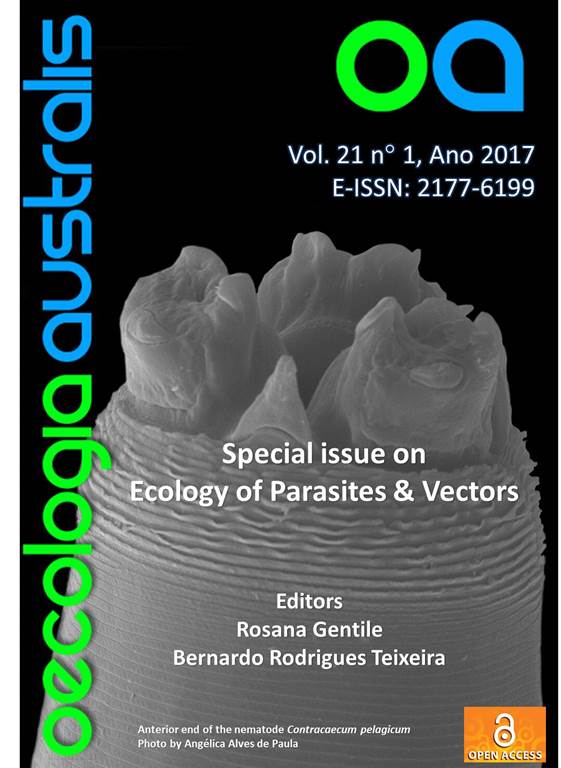WILL GLOBAL WARMING ALTER THE GEOGRAPHIC DISTRIBUTION OF Lepiselaga crassipes (DIPTERA: TABANIDAE), THE VECTOR OF TRYPANOSOMIASIS IN EQUINES IN THE NEOTROPICS?
DOI:
https://doi.org/10.4257/oeco.2017.2101.03Keywords:
Climate changes, Horse flies, Mechanical vector, Species distribution modeling, TrypanosomaAbstract
Climate changes affect species distributions worldwide; however, their consequences associated to vector-borne diseases are poorly known. This lack of information is even more pressing regarding vectors of livestock pathogens, such as Lepiselaga crassipes (Diptera: Tabanidae), the mechanical vector of trypanosomiasis in horses and cattle in the Neotropical region. To examine the potential distribution of this tabanid in the neotropics and estimate its future distribution, an environmental suitability analysis was carried out, as well as an analysis of size and geographic boundaries of the current distribution with the generation of distribution maps (range). The results were compared with those generated for future projections based on possible climate changes in 2050 and 2070. Nineteen bioclimatic layers and one high altitude layer were used. Future projections were based on general circulation models CCCMA_CanESM2 for 2050 and 2070 using the most optimistic (RCP 2.6) and the most pessimist scenarios (RCP 8.5). High environmental suitability for all scenarios was concentrated in the Brazilian and Colombian Amazon regions, extending to areas in Venezuela, Peru, and Ecuador, with good performance of the models (AUC>0.7). Analysis of area distribution shows a range retraction for all scenarios. Despite this, the models indicated new areas of occurrence of L. crassipes concentrated mainly in Argentina, and according to the models for future scenarios, its occurrence remained in southern South America, areas with horse herds that would be exposed and susceptible to trypanosomiasis transmitted by tabanids.


